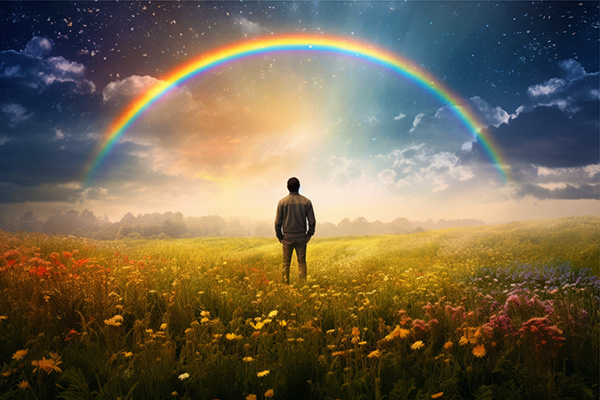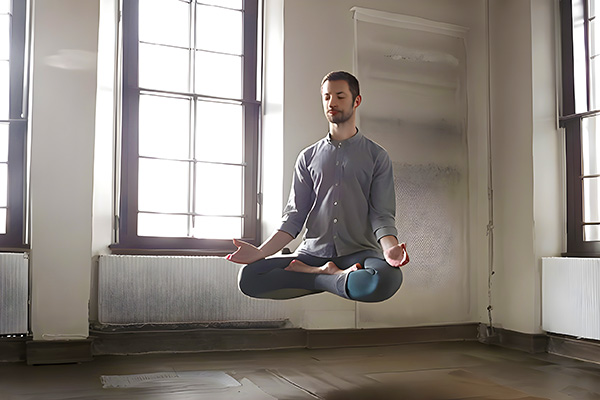hinduism
Transform Your Chores Into Moments Of Zen
 I recently had to find my “inner zen” when I had to file my taxes in person. Even though I was really, really not in the mood and not looking forward to it at all, I decided to make the most of this dreaded chore by practicing a time-tested spiritual technique of just being present in the moment. This attitude made my day so much easier and more fulfilling.
I recently had to find my “inner zen” when I had to file my taxes in person. Even though I was really, really not in the mood and not looking forward to it at all, I decided to make the most of this dreaded chore by practicing a time-tested spiritual technique of just being present in the moment. This attitude made my day so much easier and more fulfilling.
As I waited in line at the tax office, I couldn’t help but overhear a less than happy man ranting in one of the booths. I felt bad because, well, we are all human and this is about paying taxes, for goodness sake! We can hardly blame others for reacting this way. I mean, who really enjoys doing their taxes?
But I think it’s better to stay calm and carry on, because in the end everything will be fine. Having a “panic attack” or “hissy fit” like the guy in that booth won’t change the situation, except to make it worse. I know from experience that keeping an inner calm always wins the day.
If you have to deal with a chore or task that you are not looking forward to, try to embrace it and immerse yourself in the experience rather than making it worse by creating a lot of resistance around it. There is a lot of ancient wisdom in “being present in the now.” It is no accident that this concept is rooted in various spiritual traditions and teachings throughout history, as it points to a universal truth that is essential for spiritual living and personal well-being.
Find Your Rainbow In Troubled Times
 There are days when it seems like the storm winds and rain in your life will never stop. Those days when your mind is filled with shadows and your heart is heavy. When a grief or a broken heart seems like a never-ending wound.
There are days when it seems like the storm winds and rain in your life will never stop. Those days when your mind is filled with shadows and your heart is heavy. When a grief or a broken heart seems like a never-ending wound.
But trust me. One day soon you will walk out into the sunshine and see another beautiful rainbow! You will look at the colors of a perfect rainbow after a destructive storm of heavy rains and gasping winds, and you will know that all is well.
The storm may sometimes seem never-ending, but we always find a rainbow of promise on the other side. Then you will see the majesty of the spectrum of colors and the great arc that delights the sky. And if you follow that wondrous curve carefully, you may even find the pot of gold at its end!
In that perfect moment, you will forget the sadness and despair you felt before. The heaviness in your heart will be gone and you will be reminded that nothing is lost forever. The rainbows of life will always bring new moments, a new day, a new beginning. This is Spirit’s promise to us.
Since the dawn of time, rainbows have captured the imagination and beliefs of people in different cultures as a divine symbol of hope, healing, protection and rebirth.
The Mystical Phenomenon Of Levitation
 After seeing with my own eyes my yoga teacher levitate many years ago, I am convinced that levitation is not only possible, but that anyone can achieve it through a dedicated spiritual practice.
After seeing with my own eyes my yoga teacher levitate many years ago, I am convinced that levitation is not only possible, but that anyone can achieve it through a dedicated spiritual practice.
I used to attend weekly yoga classes led by a wonderful teacher who was 76 years “young” at the time. She was vibrant and lithe enough to make us younger ones look awkward by comparison.
One evening she invited her advanced students to watch a levitation demonstration. I must admit that I was a little skeptical and did not really know what to expect, but I am always open to new spiritual experiences.
She gave a talk before the demonstration, but I don’t remember much of what she told us. What I do remember very vividly is the incredible moment when she actually floated from her horizontal position on the floor. In a trance-like state, she rose gently and was suspended about a foot (30 centimeters) in the air.
Years later, I had another unusual levitation experience. After a wonderful week-long workshop at the Arthur Findlay College of Spiritualism and Psychic Sciences in Essex, England, a large group of teachers and students from the various classes gathered for a group meditation. The powerful energy in the room that evening was indescribable.
Understanding Psychic Predictions
 There are many misconceptions about psychic predictions. The first misconception is that a psychic prediction is static and unchanging. The second big myth is that psychics are omniscient deities who always see everything exactly as it will happen.
There are many misconceptions about psychic predictions. The first misconception is that a psychic prediction is static and unchanging. The second big myth is that psychics are omniscient deities who always see everything exactly as it will happen.
Even if we were able to predict every possible outcome for the rest of your life, many of those predictions will become inaccurate or even a complete failure over time because the future is flexible and fluid.
The future that a psychic foresees in a reading today will look slightly different in a month’s time, and will inevitably look significantly different in a year’s time. This is what distinguishes true psychic reading from fortune-telling.
Our destiny is constantly being shaped and adjusted by the creative capacity that exists within each of us. Each human being is the physical expression of a spirit essence with free will that allows us to create and navigate our reality, and direct our destiny. Our spirit, soul or consciousness shapes our daily reality and determines the course of our life journey. This process of creation is called manifestation.
Manifestation refers to the metaphysical idea that our thoughts, beliefs, and intentions produce tangible results in the external world. Manifestation is, in fact, the foundation of our very existence, for our present life journey as a spirit essence in human form is, in fact, also a manifestation!
The Compassion Of Tough Love
 We have an amazing tool within us: our heart. Not only does it keep us alive, but it also allows us to feel deep emotions, such as love and resentment, joy and sadness, achievement and loss, compassion and apathy.
We have an amazing tool within us: our heart. Not only does it keep us alive, but it also allows us to feel deep emotions, such as love and resentment, joy and sadness, achievement and loss, compassion and apathy.
Many people fail to see the power of the heart and what we as humans can do with that power for ourselves and others. The heart is in fact key to our personal and spiritual learning and our soul expansion in this lifetime.
However, many of us who strive to contribute to a better world with the power of our loving hearts have also seen that giving material things, like money, and trying to help those who refuse to help themselves, does not cure the suffering in the world. It usually only puts a band aid on the underlying problems and in time it just returns as additional problems.
We all have our own karmic lessons, and if not learned it becomes a recurring issue until we finally learn to fix it, learn from it, and move forward. Then it is no more a lesson, but a wisdom.
It is also true that we can get in the way of others learning their lessons. Sometimes we jump in too quickly or end up taking on their burden, only to find it happening again and again. Then all our efforts and sacrifice were in vain.

